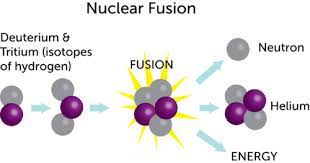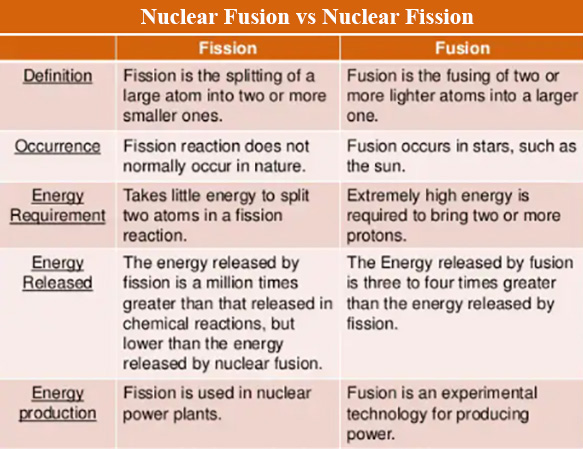Science & Technology
Fusion Ignition
- 20 Aug 2021
- 5 min read
Why in News
Recently, researchers at the Lawrence Livermore National Laboratory (which operates the National Ignition Facility in California, US) appeared to have demonstrated “fusion ignition” for the first time.
- This breakthrough has brought the world closer to the dream of near-limitless clean energy through nuclear fusion.
Key Points
- About the Experiment:
- They applied laser energy on fuel pellets to heat and pressurise them at conditions similar to that at the centre of our Sun.
- This triggered the fusion reactions.
- These reactions released positively charged particles called alpha particles (helium), which in turn heated the surrounding plasma.
- The heated plasma also released alpha particles and a self-sustaining reaction called ignition took place.
- Ignition helps amplify the energy output from the nuclear fusion reaction and this could help provide clean energy for the future.
- They applied laser energy on fuel pellets to heat and pressurise them at conditions similar to that at the centre of our Sun.
- Significance of the Experiment: Reproducing the conditions at the centre of the Sun will allow studying:
- Plasma, the state of matter that has never been created in the lab before.
- Gain insights into quantum states of matter.
- Conditions closer and closer to the beginning of the Big Bang.
- About Nuclear Fusion:
- Nuclear fusion is defined as the combining of several small nuclei into one large nucleus with the subsequent release of huge amounts of energy.
- It is the opposite reaction of fission, where heavy isotopes are split apart.
- Harnessing fusion, the process that powers the Sun, could provide a limitless, clean energy source.
- In the sun, the extreme pressure produced by its immense gravity creates the conditions for fusion to happen.
- Fusion reactions take place in a state of matter called plasma. Plasma is a hot, charged gas made of positive ions and free-moving electrons that has unique properties distinct from solids, liquids and gases.
- At high temperatures, electrons are ripped from atom’s nuclei and become a plasma or an ionised state of matter. Plasma is also known as the fourth state of matter.
- Nuclear fusion is defined as the combining of several small nuclei into one large nucleus with the subsequent release of huge amounts of energy.
- Advantages of Nuclear Fusion:
- Abundant energy: Fusing atoms together in a controlled way releases nearly four million times more energy than a chemical reaction such as the burning of coal, oil or gas and four times as much as nuclear fission reactions (at equal mass).
- Fusion has the potential to provide the kind of baseload energy needed to provide electricity to the cities and the industries.
- Sustainability: Fusion fuels are widely available and nearly inexhaustible. Deuterium can be distilled from all forms of water, while tritium will be produced during the fusion reaction as fusion neutrons interact with lithium.
- No CO₂: Fusion doesn't emit harmful toxins like carbon dioxide or other greenhouse gases into the atmosphere. Its major by-product is helium: an inert, non-toxic gas.
- No long-lived radioactive waste: Nuclear fusion reactors produce no high activity, long-lived nuclear waste.
- Limited risk of proliferation: Fusion doesn't employ fissile materials like uranium and plutonium (Radioactive tritium is neither a fissile nor a fissionable material).
- No risk of meltdown: It is difficult enough to reach and maintain the precise conditions necessary for fusion—if any disturbance occurs, the plasma cools within seconds and the reaction stops.
- Abundant energy: Fusing atoms together in a controlled way releases nearly four million times more energy than a chemical reaction such as the burning of coal, oil or gas and four times as much as nuclear fission reactions (at equal mass).
- Other Related Initiatives:
- International Thermonuclear Experimental Reactor (ITER) Assembly: It aims to build the world's largest tokamak to prove the feasibility of fusion as a large-scale and carbon-free source of energy. The ITER members include China, the European Union, India, Japan, South Korea, Russia and the United States.
- China’s Artificial Sun: The Experimental Advanced Superconducting Tokamak (EAST) device designed by China replicates the nuclear fusion process carried out by the sun.






